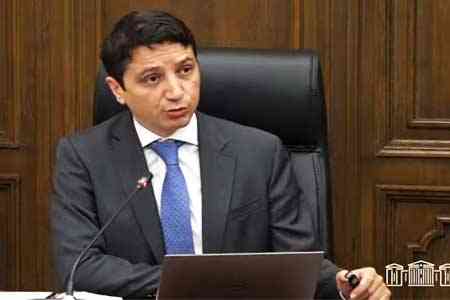


ArmInfo. In the long term, Armenia intends to pursue a path of spending containment and reduce the budget deficit to 1%, as stated by Finance Minister Vahe Hovhannisyan on September 24 during a panel discussion "Armenia's New Reality as an Economic Shock."
According to Hovhannisyan, the Medium-Term Expenditure Framework for 2026-2028 (MTEF) aims to ensure fiscal sustainability by reducing the budget deficit, gradually bringing it to 2.8% of GDP from 5.5% of GDP in 2025 (4.5% in 2026, 3.5% in 2027, 2.8% in 2028, 1.8% in 2029, and 1% in 2030).
"The goal is to create additional buffers to avoid debt pressure in the event of shocks, as we live in a world with high interest rates on debt," he said.
To ensure the long-term implementation of this policy, Armenia must curb spending by increasing its efficiency. This will enable the country to maintain its debt at manageable levels and, if necessary, withstand volatility without experiencing unnecessary shocks, the Finance Minister emphasized. To achieve this, according to the MTEF, it will be necessary to reduce the share of budget expenditures in GDP by approximately 1 percentage point annually. Current expenditures will decline in line with the fiscal consolidation objective, while capital expenditures will be maintained at a level significantly higher than historical norms, thereby contributing to the strengthening of economic and infrastructure security. The share of capital expenditures in GDP will stabilize at an average of 5.9% of GDP until 2028, while current expenditures will gradually decline from 24.3% in 2026 to 22.7% of GDP in 2028.